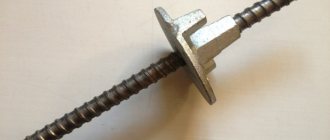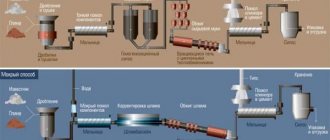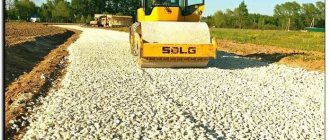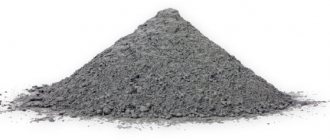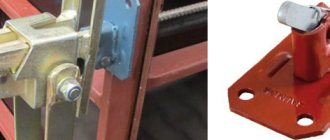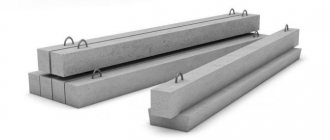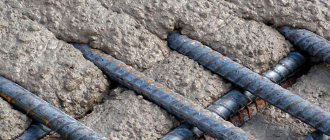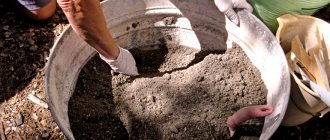To be resistant to external negative factors (humidity, exposure to underground and groundwater), it is necessary to create a durable insulating layer.
A special membrane will help in solving this problem, allowing you to protect the base of the building from mold, mildew, corrosion and further destruction.
general information
A membrane is a material consisting of a reinforcing layer, which is coated on both sides with fiberglass, polyester and modifying polymers. The thickness of the material varies from 0.4-2mm. Most often, the bottom layer is made in color, which allows you to determine the location of a leak in a matter of minutes.
A properly manufactured waterproofing membrane has the following properties:
- waterproof;
- high level of water resistance;
- high tear resistance;
- withstands the effects of chemicals;
- stretch 120-300%;
- water absorption 0.2-0.6%;
- resistance to cracks;
- level of flexibility up to - 60 degrees;
- resistant to ultraviolet rays;
- the material is resistant to temperatures in the range from -40 to +60 degrees.
For foundations, waterproofing membranes belong to the flammability category G1-G3, depending on the purpose of use. If you plan to use the material for waterproofing pools, then the lower part is tinted. If leaks occur, the material can be easily repaired and save on costly replacement of the material.
Where is it used?
Most building materials are adversely affected by water, and concrete is no exception. When liquid hits the surface of the material, it begins to penetrate through the pores and contributes to the occurrence of microcracks and corrosion in the reinforcement.
With through filtration, the foundation is quickly saturated with liquid, which negatively affects the thermal conductivity indicator. Gradually the properties change and the load-bearing capacity deteriorates.
Membrane waterproofing is used to protect:
- foundations built on wet and heaving soils;
- underground premises: basements, parking lots, elevator shafts, bridge supports, tunnels;
- balconies and pitched roofs;
- where there is high humidity (swimming pools, tanks, ponds);
- for strengthening walls and floors in saunas, baths, showers.
Reliable manufacturers who have been working in this market for more than a dozen years guarantee a minimum service life of 25-30 years.
Advantages and disadvantages
Waterproofing membranes have the following advantages:
Resistance to ultraviolet rays.- Long service life.
- The ability to withstand the negative effects of aggressive chemicals.
- No oxidative reactions occur.
- Elasticity is maintained when exposed to any temperature due to polymers and mineral components.
- No corrosion occurs.
- Can be used in acidic and alkaline environments.
The membrane is easy to install and does not take much time. According to experts, the only drawback of the material is its high cost.
What it is
Before doing membrane waterproofing of the foundation, it is worth telling more about the main material with which you will be working.
Thus, a waterproofing membrane is a film that can protect concrete from moisture and at the same time insulate it. The composition includes polyethylene mixed with polymers, antioxidant substances, and minerals. Thanks to this composition, the polymer structure becomes elastic and porous. This improves the quality of protection not only from moisture, but also from mechanical damage.
The membrane itself is a layer of polyester, glass cloth or fiberglass, which is tightly sandwiched between two layers of modified, reinforced polymer. Usually the top layer is made black and the bottom layer colored so that damage can be immediately seen.
Diagram of foundation waterproofing with membrane
Classification
The main feature of the classification is the material for manufacturing:
- polyvinyl chloride - PVC;
- thermoplastic polyophene – TPO;
- synthetic rubber – EPDM;
- artificially modified bitumen.
Membranes made from polymers are classified as mounted, and those made from bitumen are classified as weld-on. In the Russian Federation, bituminous materials are still predominantly used. However, polymers are considered lighter in weight, resistant to external influences and have low flammability.
Operating principle of a profiled membrane
The membrane is attached to the ground with spikes and is covered with geotextile on top. Voids will be created between the fabric and the spikes. Through them, water freely rolls down to the drainage pipes, through which it is diverted from the foundation.
Waterproofing design using a membrane
To simplify installation, a two-layer membrane is available. Its layers are connected to each other, a profiled membrane and geotestile. If necessary, the membrane can work together with the bitumen coating of the foundation, forming a protection system. In this case, when applied to the bitumen waterproofing, it plays the role of reinforcing the waterproofing, protecting it from mechanical damage, and the convex cells drain water into the drainage.
If a building is built on soils that contain sand and have the property of not retaining moisture, then water does not accumulate between the foundation wall and the soil. In this case, waterproofing can be simplified and simply cover the wall with a profiled membrane made of PVC film.
There is one condition here - this is the deep occurrence of groundwater and the confidence that if its level critically increases, the water will not affect the foundation. This can be explained by the fact that the membrane is not hermetically bonded to the wall; there is an air gap between it and the foundation. If the membrane is slightly damaged, it quickly fills with water. In these cases, to be on the safe side, a layer of bitumen mastic is applied to the base and lower part of the foundation.
Installation methods
There are several methods of waterproofing and each has distinctive features.
Using film type material
The waterproofing process has similar features to the traditional roll method, but is easier to use:
- To begin with, rondels made of VC material are installed in the lower part of the structure. The pitch should be up to 1.5 m. The film should be 30-40 cm higher than the ground level and cover the base part.
- Cutting sheets where the overlap of the sole on the foundation is 20-30cm. It is important to ensure that at the moment of falling asleep, the stones do not break through the material.
- Using welding, the membrane is welded to the mount.
- Overlapping sheets. For connection, tape, glue, and construction adhesive are used.
- As soon as the sinuses are filled, the base is covered with plaster.
Installation of profiled type
The material is distinguished by the presence of spikes on the surface. between the foundation and the surface , which can act as drainage and remove the accumulation of liquid.
The drainage system is laid together with geotextiles, which will serve as a filter.
Profiled insulation involves fastening the membrane to the walls of the structure. As a rule, material with a thickness of 0.5-1 mm is used for work, and the protrusions are 8 mm. The width varies in the range of 1-2.5 m.
Vertical insulation
A distinctive feature of the method is that there is no need for a primer, the use of gas burners or an adhesive composition.
The work is performed in the following sequence:
- Installation of profile structures at the top of the foundation.
- Attaching the membrane to the foundation.
- Joining the material with an overlap and fixing it with locks.
- Dowels for fastening are used in the lower part along with washers, which allows you to create a tight seal.
- Geotextiles are used on top.
Horizontal
The method is used during the construction stage using the following technology:
- digging a pit 40-50 cm deep;
- preparation of the drainage system;
- soil compaction and leveling;
- insulation of the base using polystyrene foam;
- laying separating geotextiles (density 110 g/m³) to exclude contacts of the heat-insulating layer with the membrane;
- installation of the panel with an overlap of 50 mm;
- cleaning edges;
- the edges are welded using a construction hair dryer;
- laying geotextiles with a density of 500 g/m³ to protect the membrane from negative external influences when formwork and reinforcement are installed and concrete is poured.
As soon as the seams are welded, specialists carry out control tests: they cut out a strip 15 cm long and 5 cm wide and begin testing for tensile strength. Next, close the incision with a patch.
Types of membranes and their features
This waterproofing material has already begun to gradually replace the familiar roofing felt or coating mastic compositions from the list of building materials. The membrane is easy to use, can be installed quickly, and does not require seasonal maintenance.
Thanks to its own design and technical parameters, the material perfectly protects foundation walls from the negative effects of water without being subject to deformation.
There are the following types of membrane material used for foundation waterproofing:
Flat film
It is made from polyethylene and other synthetic polymers, the bulk of which are human waste. It follows that such a membrane is inexpensive, its thickness is 0.2 - 2 mm. For waterproofing foundations, a film with a thickness of at least 0.4 mm is used. There are materials with flat corrugation, which ensures reliable adhesion to the concrete mortar.
Profiled
High pressure polyethylene is used for its production. The membranes come in different shapes and have special projections. They come in one or several layers and are used only for finishing foundations from exposure to water. In combination with geotextiles, such membranes are used to construct drainage systems. The minimum thickness of the material is 1 mm, the height of the protrusions reaches 8 - 20 mm.
Sheets made by different manufacturers can vary in width; they are attached to a flat surface or to a mortar mixture, so that in addition to protecting against water, the membrane prevents mechanical damage.
Manufacturing and popular manufacturers
To produce a waterproofing membrane, high-tech polymers, plasticizers and mineral additives are used.
The ratio of substances used can be depicted as follows:
- chalk – 48%;
- coloring matter – 3%;
- modification additives – 49%.
In specialized production facilities, bulk substances are stored in a vertical position, and liquid substances are stored in a horizontal position.
The substances are mixed in strict ratios using specialized equipment, and the resulting mixture is stored for 24 hours.
Next, the composition is melted and a reinforcing layer is applied on top. The formation of the outer layer of material is carried out through extrusion. Once the material has cooled, it is cut into strips and rolled.
After completion of manufacturing, tests are carried out in laboratory conditions to ensure compliance with the following criteria:
- Tensile strength.
- Frost resistance.
- Elasticity and flexibility when exposed to low temperatures.
- Resistance to direct exposure to ultraviolet rays.
Each operation is automated, which reduces the risk of defects. All indicators must be performed in accordance with GOST 56704-2015.
Among the leading domestic membrane manufacturers, the following companies can be noted:
- TechnoNikol;
- Subject;
- Rhinolit;
- Icopal;
- Penoplex;
- Sika;
- Protan.
Manufacturers of bitumen-based membranes are distinguished separately:
- Isol;
- Rubitex;
- Bikrost.
Depending on the type of membrane material chosen, the cost per 1 m² varies in the range of 85-1100 rubles.
Advantages and disadvantages
The advantages of include :
- High degree of UV resistance.
- The service life of such a membrane with proper installation is about 50 years.
- Not afraid of aggressive environments (high acidity, alkali, etc.).
- Maintains elasticity even with temperature changes.
- High water resistance, low water absorption.
- Stretchable.
- Light weight.
- Protects against corrosion and is itself resistant to it.
- Completely environmentally friendly.
- You can do the installation yourself.
- High installation speed.
The only drawback of this waterproofing is the cost, which some may find too high.
But these investments pay off due to the benefits, so you should not refuse the option with polymers.
Price of work
The cost of installation per m2 depends on several criteria:
- Type of material used.
- Technology.
- The presence of specific features of the construction site.
- Difficulty level.
- Size of area to work.
- Types of equipment used.
To have a rough idea of the current prices, it is recommended to pay attention to the following table:
The cost may vary depending on the company’s internal pricing policy.
Tips for welding membranes
The effectiveness of the entire waterproofing depends on how well the membrane material is connected in the seams. Therefore, it is better to fasten the insulation step by step:
- Clean all connections.
- Warm up the polymer a little.
- Do a test weld.
- Wait an hour.
- Check how well the seams are connected.
- If no defects are found, you can continue working with other seams. If not, additional welding is needed.
Waterproofing with polymer membrane
About 50 years ago, film waterproofing of foundations began to be used in Europe and North America. From that moment on, large-scale production of these materials began. Progress does not stand still. Over time, the variety and functionality of waterproofing expanded, which contributed to the emergence of completely new properties. Now polymer fiber is a high-tech product that, due to its advantages, provides waterproofing of both horizontal and vertical surfaces.
Attaching waterproofing membranes
Flat polymer-type membranes are spread on the flat, dried surfaces of the base of the house. Then:
- The joints are connected to each other with a blowtorch or an industrial hair dryer. To ensure better tightness, the sheets are spread overlapping, providing a reserve of at least 5 cm from the edges. Glue the film onto the concrete mortar using special glue or tapes;
- self-adhesive membranes have an adhesive surface on one side, protected by paper. It is removed as the membranes are spread and fixed, the film is pressed to the surface of the foundation and fixed with heavy objects. After a few hours, the stops are removed and a control layer of film is spread on top;
- a profiled membrane can be attached to the foundation only mechanically, most often with dowels with profiled washers, which ensure the tightness of the coating at the junction. Structurally, waterproofing sheets have special latches on the sides or laminated adhesive tapes.


